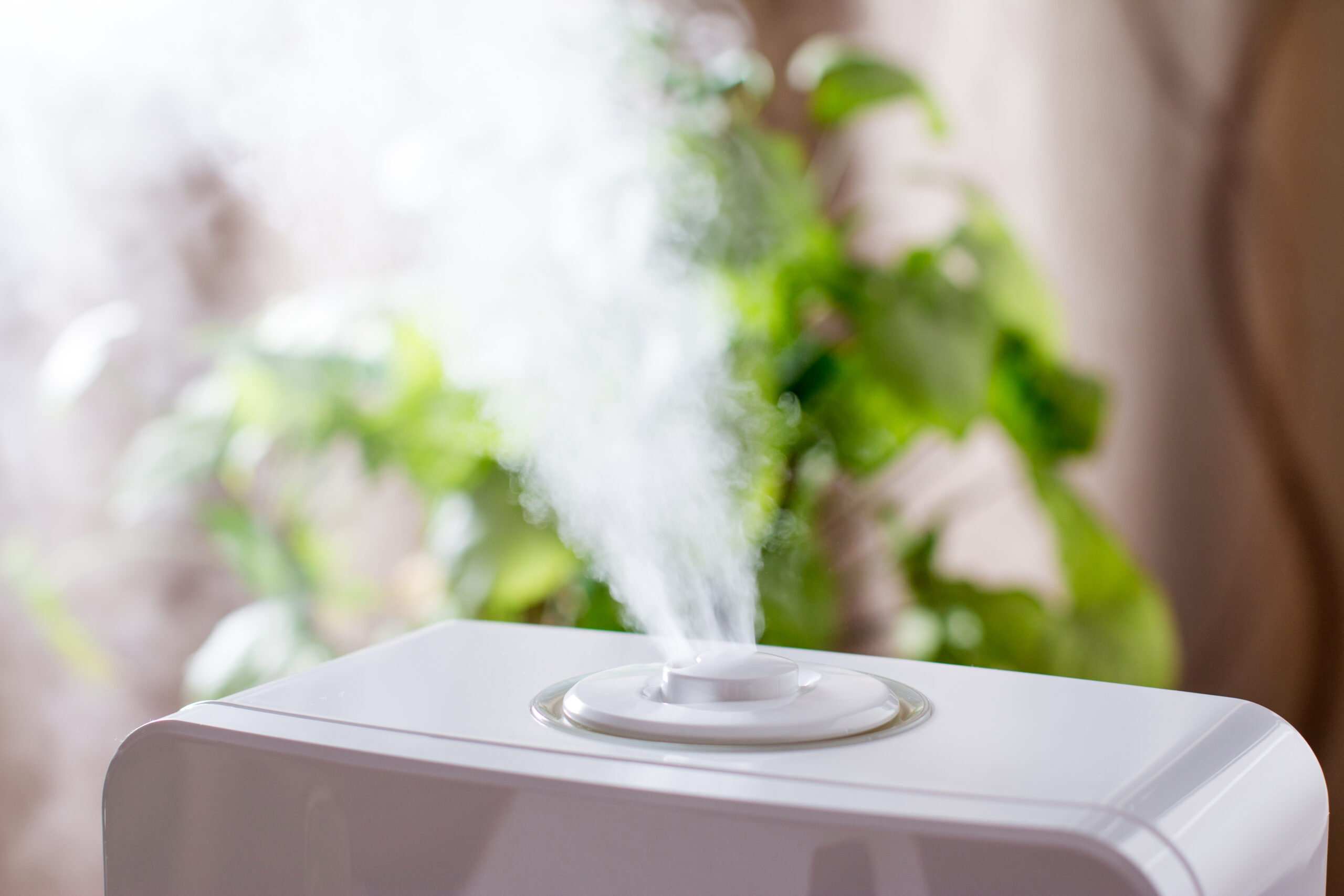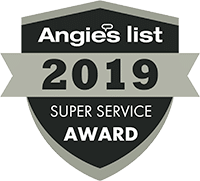Can a Humidifier Create Mold?

Although Seattle is famous for its rainy climate, the air inside most homes can still be quite dry during the winter. Colder air can’t hold nearly as much moisture as warmer air, which leads to lower relative humidity, making the air feel much drier. If you’re like many people, you may occasionally use portable humidifiers during the winter to help add moisture to your home. One issue with running a humidifier is that it can contribute to mold. In this article, we’ll discuss how to prevent a humidifier from causing mold and why a whole-home humidifier is the best choice for overcoming dry winter air.
Ideal Humidity Level to Prevent Mold Issues
The ideal humidity level for your home is partly a matter of personal preference and what you find most comfortable. You should usually try to keep your house’s relative humidity level at around 40-50%. It’s fine if the humidity level is slightly above 50%, but you should always make sure it never reaches 60% or higher.
At 60% relative humidity, you will quickly start having issues with condensation forming on windows, walls, floors and ceilings. Condensation is a serious issue, as moisture and warm temperatures can create the perfect breeding ground for mold. Mold spores are always circulating in the air, but mold will only start growing if it has the right conditions. If your home is too humid and has issues with surface condensation, mold can potentially start growing and spreading in just 24 to 48 hours.
Issues With Using Portable Humidifiers
If you leave a portable humidifier running in one area too long, it can easily make that area humid enough that condensation forms on the outside or inside of the walls and ceilings. All the moisture will then start to soak into the drywall, insulation, wall studs, etc. and potentially allow mold to form.
Running a portable humidifier occasionally can be useful if you are sick with a cold or the flu. However, it is difficult to control the humidity level with a portable humidifier unless you have a hygrometer that allows you to monitor the moisture percentage in the air so you know when to shut the humidifier off. Portable humidifiers also aren’t a solution for overcoming issues with dry air throughout the home unless you have one in each room.
How Whole-Home Humidifiers Control Indoor Humidity
If you want to keep your entire home less dry while avoiding issues with condensation and mold, the solution is to install a whole-home humidifier. A whole-home humidifier pumps moist air out into the ductwork when the heating system runs so that the humidity level in every room increases. Another major advantage is that a whole-home humidifier is connected to the house’s water supply so that the water reservoir automatically refills as needed.
A whole-home humidifier will usually run the entire time the heating system runs to prevent the relative humidity level from decreasing. However, most whole-home humidifiers are also controlled by a humidistat, which measures the humidity level just as a thermostat measures temperature.
A humidistat allows you to program your desired humidity level. If the humidity is below the set level, the humidifier will always run throughout the entire heating cycle. However, the humidistat will trigger the humidifier to shut down as soon as your home is at the desired humidity level. This means it will automatically work to avoid issues with high humidity and condensation since it will only run the humidifier if the air is drier than what you want it to be.
An even better solution is to install a smart thermostat, as more advanced units can also function as a humidistat. This means that the smart thermostat can turn the humidifier, blower and heating system on and off as needed to maintain a consistent temperature and keep the humidity level where you want.
Choosing the Right Whole-Home Humidifier
When installing a whole-home humidifier, you will need to determine which type of unit will work best—steam, fan-powered or bypass. A steam humidifier uses electricity to boil the water in the reservoir and produce steam. Bypass and fan-powered humidifiers rely on the hot air from a furnace or heat pump to cause water in the unit to evaporate.
Bypass humidifiers don’t use energy. Instead, some of the hot air naturally flows out of the main duct and through the humidifier. Fan-powered units use a small amount of electricity and produce more moisture than bypass units. Instead of working passively like a bypass unit, the fan actively brings in hot air from the main duct and forces it over the water tray so that the water evaporates more quickly and more moisture is produced.
Steam humidifiers are the most effective option, as they are capable of producing many more gallons of moisture each day. Steam humidifiers are used in extremely dry climates and can sometimes be overkill in the Seattle area since the winters aren’t all that dry. The one exception is for much larger homes where a bypass or fan-powered humidifier may not be effective enough and not produce enough moisture to keep the air from drying out.
While a steam humidifier can be a good option for a larger home, it will cost you much more than either of the other two types. Not only are steam humidifiers the most expensive option, but they also consume lots of electricity. If you were to use a steam humidifier every day whenever your heating system runs, it could potentially cost you a couple of hundred dollars a year.
The biggest advantage of a steam humidifier is that it can work independently of your heating system since it doesn’t rely on the hot air from your furnace or heat pump to work. On warmer days when your heating doesn’t run much, you can turn on the HVAC blower and humidifier to continue circulating moisture through the house when your heat is off.
In our area, bypass and fan-powered humidifiers are usually sufficient to prevent your home from becoming too dry. The choice between the two usually comes down to the size of your home, how dry it normally is and how much you want to spend. A bypass unit is ideal for small homes or if the air in your home is usually not all that dry. Bypass units are the least expensive type of whole-home humidifier and also cost little to operate. While a fan-powered humidifier requires electricity to work, the cost to operate it will typically be under $20 a year.
Contact the Pros
If you’re considering a whole-home humidifier for your house, Brennan Heating & Air Conditioning is ready to help. We install a range of different humidifiers as well as other indoor air quality equipment like air scrubbers, air purifiers, ventilation and filtration systems, whole-house fans and more. With more than three decades of experience, we are also the top choice in the Seattle area for all of your heating and air conditioning installation, maintenance and repair needs. We also offer professional water heater repair and installation services as well as all types of residential electrical services. For more information on your options for whole-home humidification, contact Brennan Heating & Air Conditioning today.






